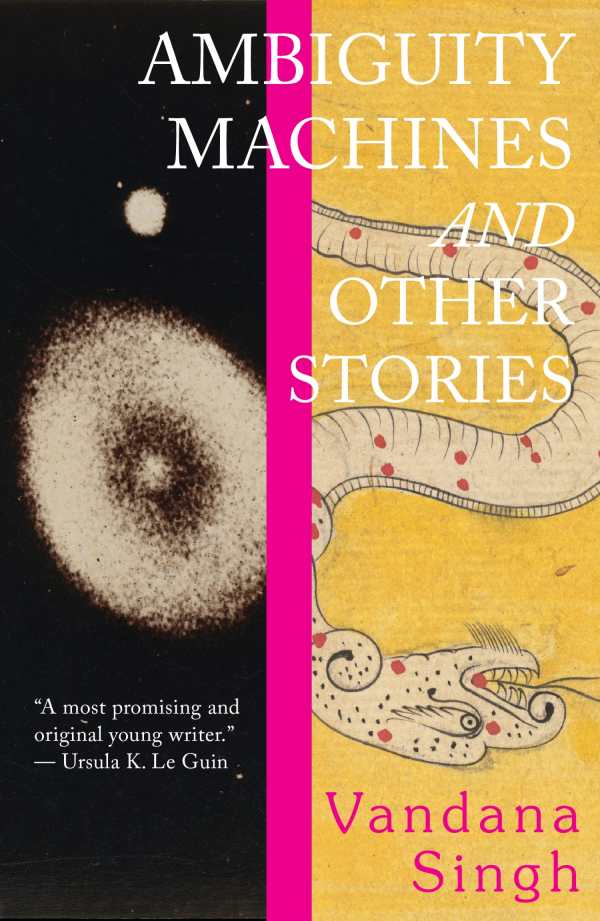Ambiguity Machines
And Other Stories
The best science fiction requires a protagonist who normalizes the fantastic to tell their story. Vandana Singh’s Ambiguity Machines and Other Stories achieves this and more, with a bold collection of stories about fate, worth, and inner magic.
“When Fates Conspire,” set in future India, finds that a caste of scientists has developed a machine that peers into the past. History and time control each other, and the weight of history is what determines which time streams connect.
Gargi, a poor refugee of deluge-ridden Siridanga, is the only person who can operate the machine. The scientists—her captors—seek to assuage her with food and luxurious conveniences, but Gargi knows she is a bird in a gilded cage: “I may be uneducated but I am not stupid. They’re hiding something from me.”
Gargi prefers to use her time in the machine to observe a young housewife, Rassundari, who is educated although her literacy is forbidden. Gargi is also obligated to watch Wajid Ali Shah, a poet of esteem who lived during the same era as Rassundari. Her keepers demand intel on his writing.
Under pressure, Gargi makes up her own verses. This is all complicated by her dreams of a spirit who “floats above the delta of the river of time.” The ghost’s connection to the machine becomes clear as Gargi claims more and more freedom, emboldened by her awareness that she is the linchpin in a far grander scheme. Gargi’s role as seer through time begins to read less like science fiction and more like a self-love story, with stunningly tragic prose that is simply beautiful.
From plot to setting to payoff, Ambiguity Machines and Other Stories is a marked achievement in science fiction.
Reviewed by
Danny Gardner
Disclosure: This article is not an endorsement, but a review. The publisher of this book provided free copies of the book to have their book reviewed by a professional reviewer. No fee was paid by the publisher for this review. Foreword Reviews only recommends books that we love. Foreword Magazine, Inc. is disclosing this in accordance with the Federal Trade Commission’s 16 CFR, Part 255.

